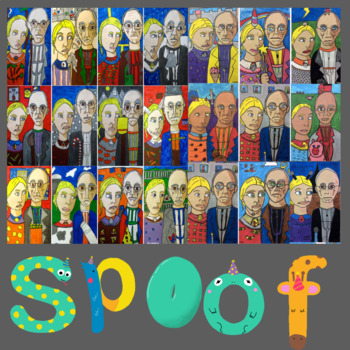American Gothic Spoof Drawing Guide
- PDF
Description
The American Gothic Painting by Grant Wood is at the Art Institute of Chicago. For many years I have been bringing my 4th grade students to see this famous iconic painting in person. Before our trip, I often introduce the artwork by showing parodies from pop culture. Then, we engage with the art by trying to recreate it. We work on the portraits in both a straightforward pose and the three-quarters pose. Once the art resembles the original enough to be recognizable, students create a spoof of their choice. If they have trouble thinking of what to draw, I invite them to use the spoof-o-matic spinner (digital or physical). This is a great warm up activity as well.
This resource includes:
- Exploration of the painting
- Motif Challenge
- Who, what, and why of the painting
- What is a Spoof and a page of examples
- Video link to edited SNL American Gothic Skit
- Spoof-o-matic (printable or digital link to customizable wheel)
- Starter drawing sheet
- Drawing Guide for 3/4 pose & Straightforward
- Student Examples (by my 4th graders)
See the gallery of student artwork.
Explore my other Transdigital Lessons here.
Need a way to advocate for iPads for your teaching space?
Share my Creating on iPads page with your administration.
Explore all my FUGLEFUN STEAM ART, SEL, and LEGO lessons and GAMES in this convenient index: bit.ly/fuglefunstoreindex





